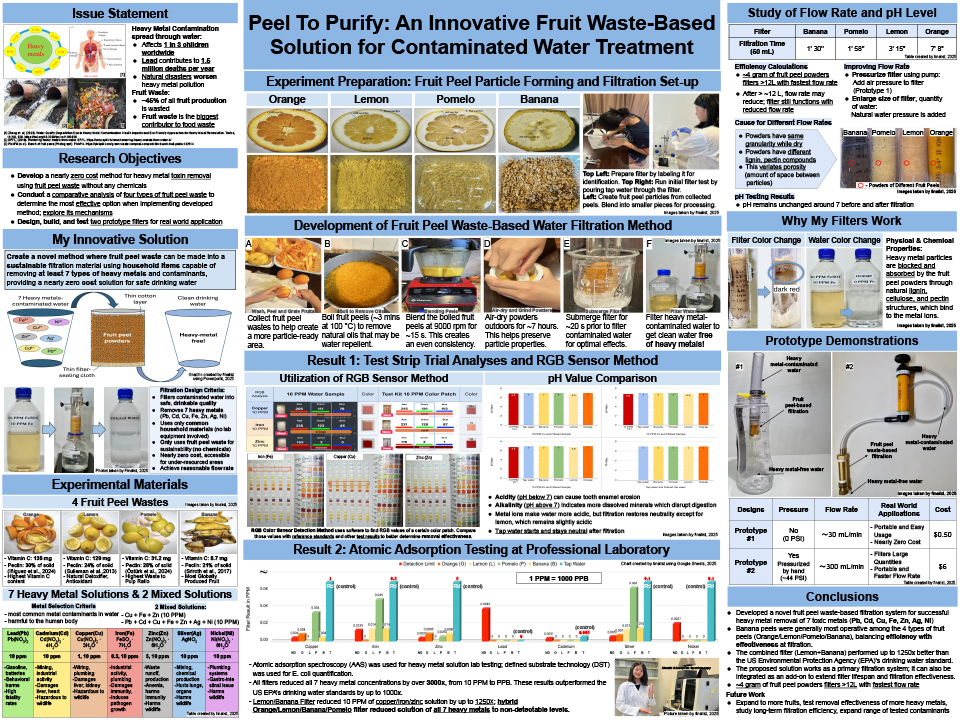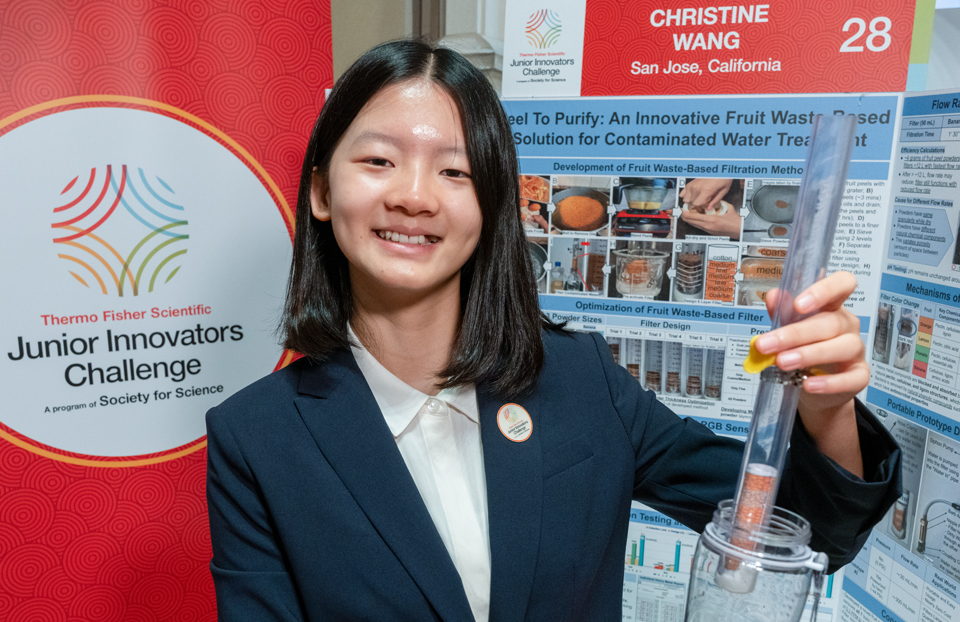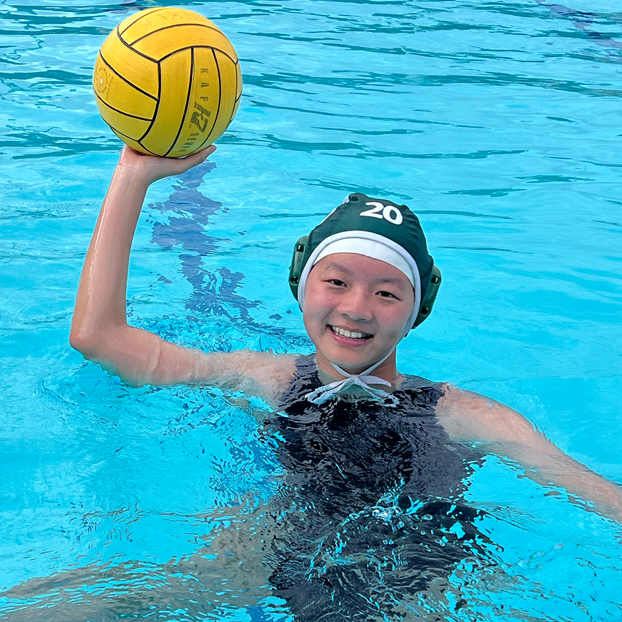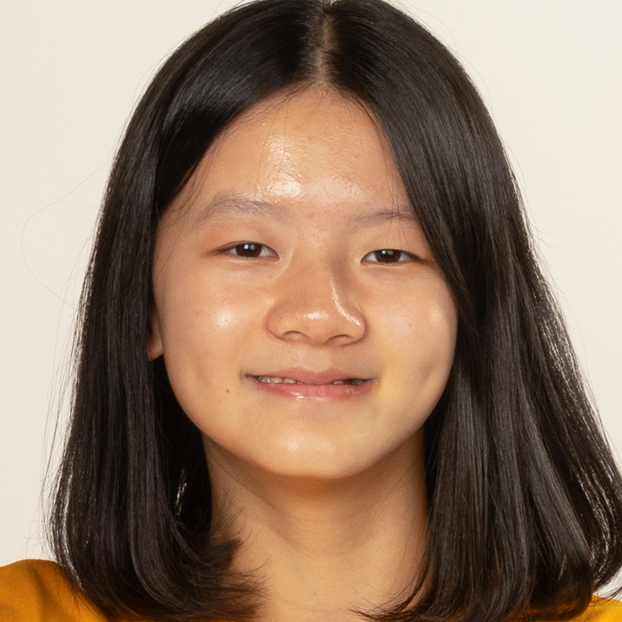Christine Wang
7th Grade, The Harker School – Middle School
San Jose, CA
Peel To Purify: An Innovative Fruit Waste-Based Solution for Contaminated Water Treatment
View Poster
Project Background
“As a Californian, I have always assumed that clean water was a guarantee,” Christine says. She was horrified to learn in in her science class that heavy metals can cause nervous system damage and “even schools and businesses in my own community were failing to meet heavy metal drinking water safety standards.” Christine did more research and found that water filtering can be very expensive, especially for people who need it the most. She also knew about the large amounts of food waste people produce. Christine decided to see if fruit peels from waste could make a sustainable water filter.
Tactics and Results
Christine worked on her project with a partner, Jingwei Guo. They learned that fruit peels contain compounds like pectin and cellulose which can bond to heavy metals, making them a potential filter. The team tested four types of fruit peel: Orange, lemon, banana, and pomelo. They ground up dried peels into powders and tested to see if the powders could remove lead, cadmium, copper, iron, zinc, silver, and nickel. Their test strip results showed that all fruit peels reduced heavy metals. They all removed 10 parts per million of lead, cadmium, and nickel — leaving undetectable levels. The team also tried combinations of peels and found a banana-lemon combination and all four peels together could filter heavy metals to better than the EPA standard. Finally, the team looked at bacteria and showed the filter could reduce E. coli levels by 83 percent and made dirty water clear again.

Beyond the Project
Christine loves writing and playing water polo. Water polo, she says, is full of energy and strategy. Writing, “is where I slow down to capture small moments.” She also runs a book exchange for the American Cancer Society. The book exchange isn’t “just about collecting donations; it’s about handing kids the pages that let them rewrite their futures,” she says. Christine would like to be an environmental engineer. “My vision is to develop hybrid systems where organic materials handle initial water filtration, while wetlands restore biodiversity.”

